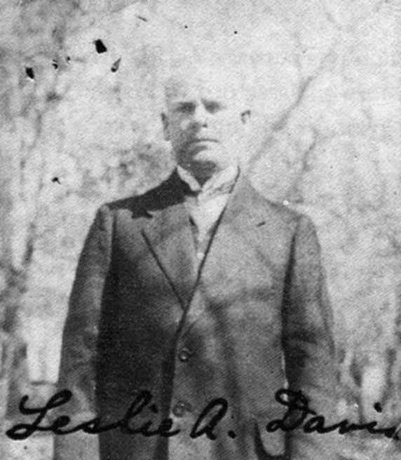Leslie A. Davis
 Leslie A. Davis (1876 - 1960) was an American diplomat and wartime consul in Kharbert (Kharput), Ottoman Empire between 1914 and 1917 and witnessed the Armenian.
Leslie A. Davis (1876 - 1960) was an American diplomat and wartime consul in Kharbert (Kharput), Ottoman Empire between 1914 and 1917 and witnessed the Armenian.
Between 1909 and 1911 Davis worked as a lawyer in New York. He began a diplomatic career in Batumi and then traveled to Uzbekistan and the Caucasus. From 1914 to 1917 he was U.S. consul in Kharput, Ottoman Turkey. In May 1918 he was appointed the U.S. representative in Arkhangelsk, Russia and moved to Helsinki.
While working as a U.S. consul in Kharput, Davis personally witnessed how many of the Armenian population, who were being deported from the outskirts of Kharput to Der Zor's desert of Syria, were redirected in Kharput "only to be slaughtered in this province." Some of his observations concerned the condition of Armenian deportees who arrived from the north. He noted that there were no men in the caravans and the remaining surviving members were very maltreated, starved and exhausted. [1]
Leslie Davis was among the mixed group of Americans who examined mass graves of killed Armenians near Kharput. Davis wrote thus a narrative report to the State Department, where he described the tens of thousands of Armenian corpses in and around Lake Geoljuk (present-day Hazar), during his trip to the lake. [2] [3] [4]
Mass deportations that had been ordered by the Turks, under which hundreds of thousands of Armenians were forced into trucks and transported hundreds of miles to die in the wilderness or falling victim to killing squads, were far worse than a straightforward massacre, he wrote. "In a massacre many escape, but a wholesale deportation of this kind in this country means a longer and perhaps even more dreadful death for nearly everyone." [3]
Leslie Davis helped some Armenians by allowing 80 of them to live in his consulate and organized an underground railway to bring the Armenians on the other side of the Euphrates and into Russia. He did this despite warnings from the Turkish government's ban on helping Armenians. [5]
While he did this rescue work, he continued his diplomatic mission and had regular meetings with Kharput's governor, Sabit Bey, who was one of the main characters of the Armenian Genocide. [5]
Notes
1. Phyllis Mack and Omer Bartov, In God's Name: Genocide and Religion in the Twentieth Century , Berghahn Books, 2001, page 214.
2. Henry Harrison Riggs, Days of Tragedy in Armenia: Personal Experiences in Harpoot, 1915-1917 , Gomidas Institute, 1997, p IX.
3. Denying the Armenian genocide, the International Herald Tribune . http://www.iht.com/articles/2007/08 / 23/opinion/edjacoby.php , August 23, 2007
4. Winter, Jay Murray, America and the Armenian Genocide of 1915 , Cambridge University Press, 2003, p.20.
5. Disobedient Diplomats and Other Heroes by Patrick Allitt . , 26 August 2007.
Source: http://en.wikipedia.org/wiki/Leslie_Davis